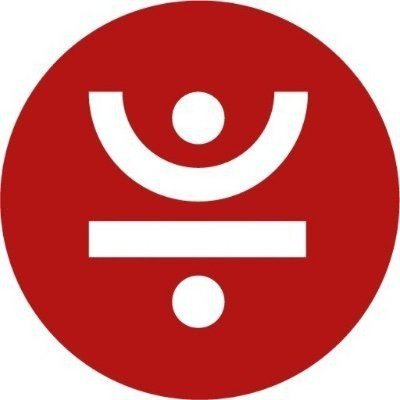【JST Buyback and Burn: JustLend DAO Launches a Deflationary Experiment for Value Recovery】
As the TRON DeFi ecosystem matures, JustLend DAO is taking a crucial step—officially proposing the JST Buyback and Burn mechanism. This proposal is not just a technical adjustment to the token economic model, but more like a signal of ecological self-repair and value reconstruction.
1. Transition from "Governance Token" to "Value Token"
Over the past two years, JST has primarily played a governance role in the TRON ecosystem: providing voting rights, parameter decision-making rights, and ecological incentives for JustLend DAO. However, under market fluctuations and inflationary pressures, this "functional token" model has gradually revealed its limitations—lacking sustained value support, making it difficult to capture the benefits of ecological growth.
The core of this proposal is to change this logic. JustLend DAO clearly states that it will introduce the protocol layer's Real Yield into the value circulation system of JST.
In other words, JST will officially transition from a "governance token" to an "ecological yield capture token."
This model has been validated by top DeFi projects such as Aave, MakerDAO, and Curve, representing a natural evolution from mature protocol governance to profit-oriented governance.
2. Funding Sources: Real Cash Flow from the TRON Ecosystem
The funds for this buyback will mainly come from two channels:
1. JustLend DAO's net income
(1) Including sTRX income (from TRX staking rewards)
(2) And SBM (Stablecoin Market) net income, which is the total income minus reserves and bad debt provisions.
2. Overflow income from the USDD cross-chain ecosystem
When the net income of the USDD cross-chain ecosystem exceeds the $10 million threshold, the excess will automatically be used for JST buyback.
The design of these two funding sources is significant: it connects TRON's stablecoin ecosystem (USDD) with the lending ecosystem (JustLend) at the income level, forming a mutually supportive DeFi financial system.
This means that TRON's "currency issuance layer" (USDD) and "credit layer" (JustLend) will begin to achieve a closed-loop value return through JST.
3. Mechanism Design: Continuous Buyback, Permanent Burn
JustLend DAO has not adopted a one-time burn model, but rather a continuous buyback + on-chain transparent burn approach:
(1) Frequency: At the beginning of each quarter, a portion of the newly added net income from the previous quarter will be used to buy back JST.
(2) Execution: The buyback will be conducted publicly on-chain, with all transaction hashes and burn addresses regularly disclosed.
(3) Deflationary Logic: All repurchased tokens will be permanently burned and will not re-enter circulation in the secondary market.
This mechanism will create long-term deflationary pressure and expectations of value return, enhancing the DAO's credibility through the transparency of on-chain execution.
4. Market Impact: An Internal Circulation Experiment of DAO Finance
From a macro perspective, the significance of this proposal goes beyond JST itself. It marks a significant evolution in the governance of the TRON DeFi ecosystem—from incentive distribution to financial autonomy.
(1) For JST holders: Substantial value capture and long-term deflationary expectations.
(2) For JustLend DAO: Increased usage of governance tokens and active participation in governance.
(3) For the TRON ecosystem: Establishing an economic closed loop similar to MakerDAO's "DAI + MKR."
Notably, the TRON ecosystem has currently formed a three-layer structure of "USDD + JustLend + $JST":
(1) USDD: Stablecoin and ecological currency layer;
(2) JustLend: Yield and capital circulation layer;
(3) $JST: Governance and value return layer.
The long-term potential of this structure lies in its ability to enable the entire TRON DeFi system to achieve a true "blood production" function.
5. Potential Challenges and Outlook
Of course, the success of this mechanism still depends on several key factors:
(1) Whether the scale of buyback funds and execution frequency are sufficient to create market impact;
(2) Whether the DAO's income data disclosure and governance execution can maintain high transparency;
(3) Whether the market environment allows the TRON stablecoin ecosystem to continue expanding.
But it is certain that this proposal makes TRON's governance system more mature, opening a new era of value return from ecological growth to token value.
6. Conclusion
The JST buyback and burn plan is not only the initiation of a token deflation mechanism but also an economic consciousness of the TRON ecosystem.
As DeFi transitions from "traffic competition" to "financial autonomy," what truly matters is no longer the number of TVL, but whether the protocol can generate positive cash flow and distribute the profits to the community.
The story of JST is transforming from a "governance token" into a "financial tool"; and TRON's DeFi experiment is entering a new cycle—from income to buyback, from governance to value.
@justinsuntron @trondao $TRX #TRONEcoStar
🔥A new proposal is live on the forum!
The community is proposing a $JST Buyback & Burn mechanism to optimize tokenomics and enhance long-term value.
🗳️Read the proposal, join the discussion, and make your voice heard! 💬👇
#JST #JustLendDAO #TRON

12.98K
6
The content on this page is provided by third parties. Unless otherwise stated, OKX is not the author of the cited article(s) and does not claim any copyright in the materials. The content is provided for informational purposes only and does not represent the views of OKX. It is not intended to be an endorsement of any kind and should not be considered investment advice or a solicitation to buy or sell digital assets. To the extent generative AI is utilized to provide summaries or other information, such AI generated content may be inaccurate or inconsistent. Please read the linked article for more details and information. OKX is not responsible for content hosted on third party sites. Digital asset holdings, including stablecoins and NFTs, involve a high degree of risk and can fluctuate greatly. You should carefully consider whether trading or holding digital assets is suitable for you in light of your financial condition.


